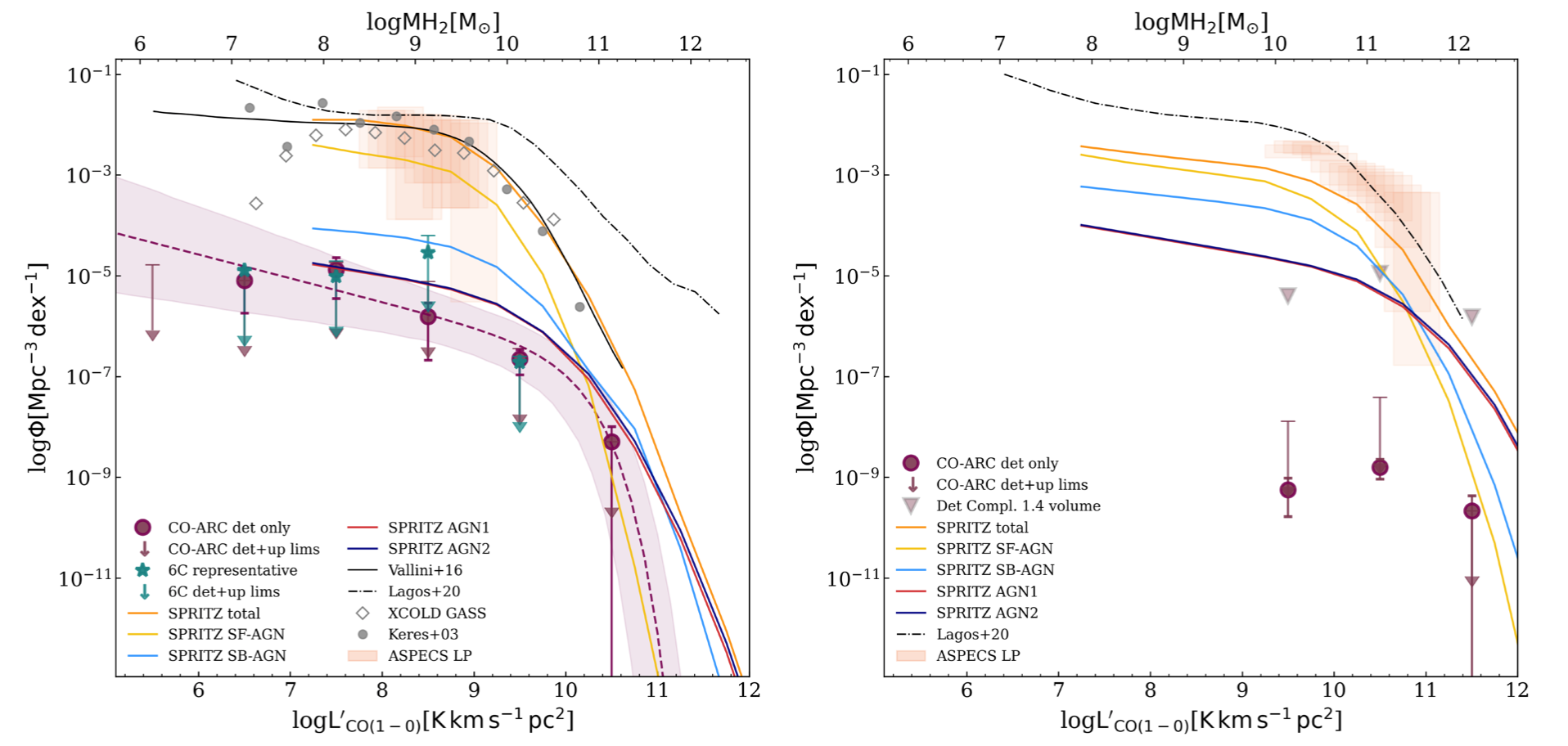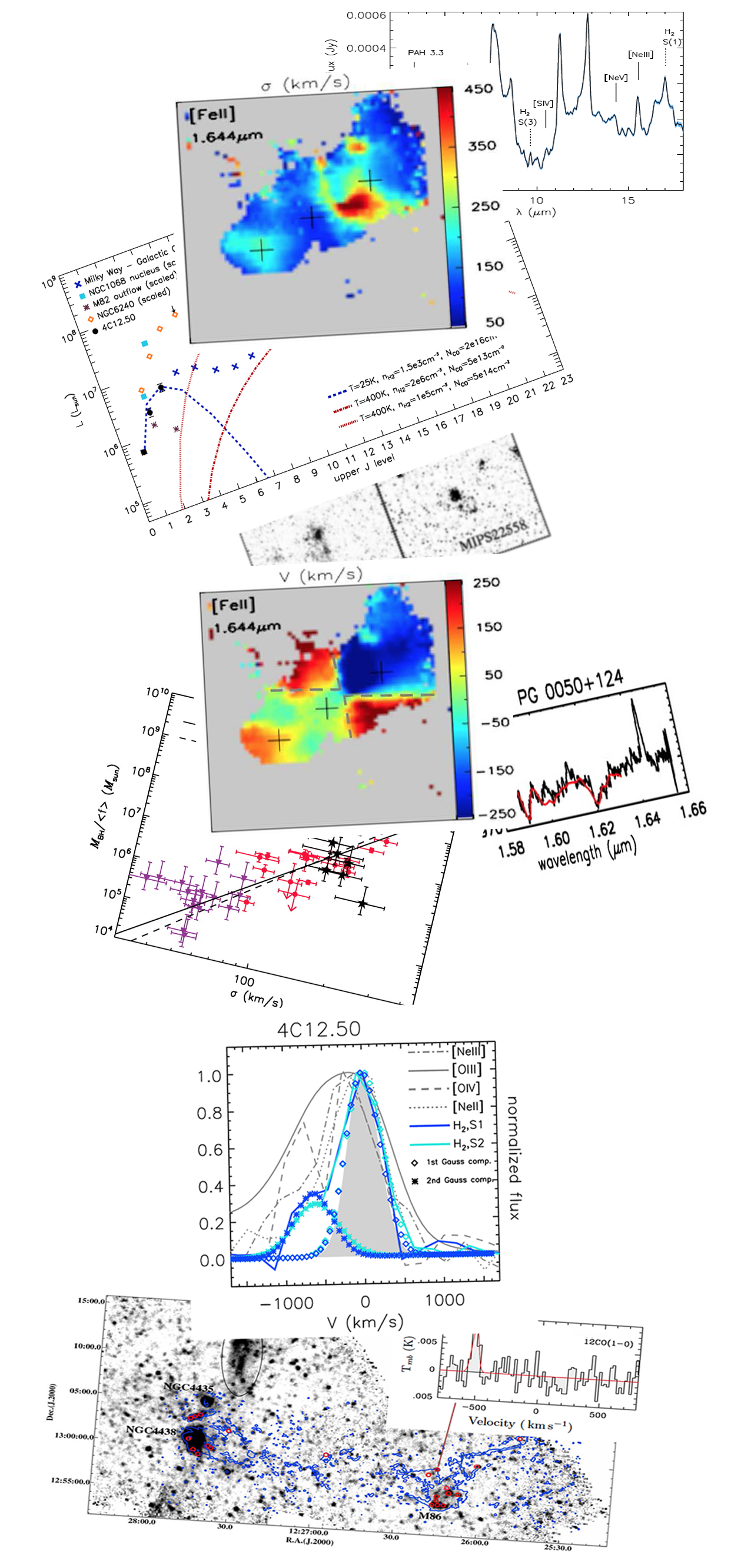ARC: Do massive winds induced by black-hole jets alter galaxy evolution? Evidence from galaxies in the ALMA Radio-source Catalogue
I am the principal investigator of a large archival ALMA project aimed at determining the gas mass content and frequency of molecular outfows in radio galaxies of different epochs. The project has received funding by the Hellenic Foundation for Research and Innovation (HFRI), under contract number 1882 with the General Secretariat For Research and Technology. Highlights of it are as follows:
1. Overpressurized and underpressurized molecular clouds in regions with molecular outflows:
By modeling the CO and HCO+ spectral line energy distribution in Atacama Large Millimeter Array data of the nearby galaxy IC5063
with an astrochemical radiative transfer code, we computed the pressure of typical line of sight molecular clouds in jet-impacted and ambient regions. Using Bery Large Telescope MUSE data, we also determined the pressure of the ionized gas surrounding the clouds. We find that, overall, we find that the external pressure of molecular clouds exceeds their internal pressure, as they are engulfed in the jet cocoon. The overpressurized clouds could undergo jet-induced star formation. Near these clouds, there are also underpressurized clouds from the rarefication of their surrounding medium in channels that the jet has opened up. The underpressurized clouds could evaporate and be removed from the star-forming gas reservoir. We, thus, find that the jet can create conditions of both suppression and enhancement of star formations.

2. The molecular gas content of radio galaxies with redshift:
Starting from the ALMA calibrators catalogue we compiled a sample of 66 galaxies with CO observations that are representative of the NVSS 1.4 GHz radio population, and reduced their data. We found gas detections in ~1/4th of them, including a couple new outflows. To this sample, we added another 54 radio galaxies with CO data from the literature, to create a supersample of 120 radio galaxies that are NVSS-representative and that cover the 0 ≤ z ≤ 2.5 range. We found that, while at all epochs the majority of radio galaxies (RGs) have undetectable reservoirs, there is a rapid increase in the H2 mass content of the CO-detected RGs with z. At 1 ≤ z ≤ 2.5 , 1/4 of the RGs have at least as much molecular gas as simulations would indicate for a typical halo mass of that epoch. These galaxies plausibly have 'normal' or even starbursty hosts. From the corresponding H2 mass functions, we deduced the following. In the local Universe, the number density of RGs with detectable molecular gas reservoirs is only a little lower (a factor of ~4) than that of type 1 and 2 AGN in simulations. At 1 ≤ z ≤ 2.5, there is a significant decrease in the number density of high-z RGs due to the rarity of bright radio galaxies. An estimate for the missing faint RGs brings populations close again. The volume density of molecular gas locked up in the brightest 1/5000-1/7000 RGs is similar in all z. This result likely indicates that the inflow rate on one hand and the star-formation depletion rate plus the jet-driven expulsion rate on the other hand counteract each other in the most luminous RGs of each epoch. More details can be found in
Audibert, Dasyra, Papachristou, et al. (2022)

The survey data producs (ALMA cubes of detected sources) can be found here and a brief first report of the survey here.

